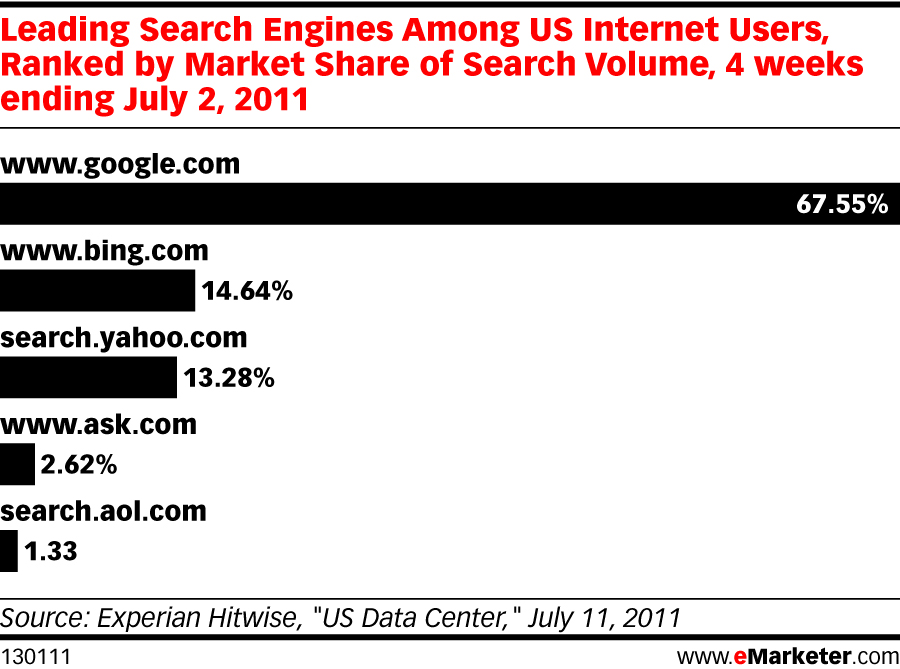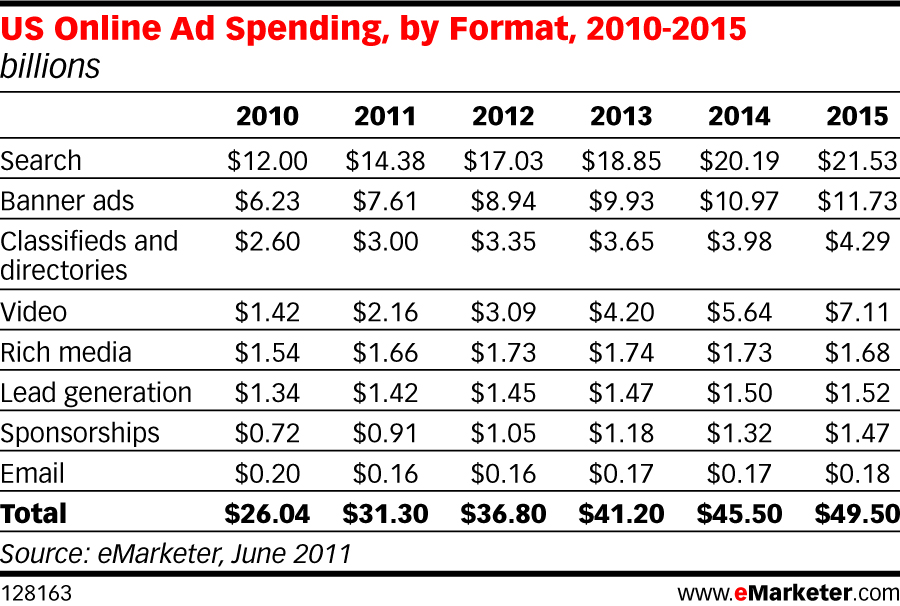Since being selected as an AdWords Seminar Leader by Google in 2006, Iâve had the opportunity to teach thousands of businesses and organizations how to use AdWords, Googleâs advertising platform. I believe in the product; if used appropriately, it offers vast online exposure for advertisers. Unfortunately, most advertisers do not understand how AdWords works or hold it accountable to deliver value to their businesses. Some advertisers make money by dumb luck; others waste hundreds or thousands of dollars each month. Iâve met countless advertisers who gauge the effectiveness of their online campaigns based on gut feelings. Iâm generally a proponent of trusting oneâs gut, but not in the case of online advertising. In this world, itâs all about the data.
Itâs in Googleâs best interests for advertisers to use data to make decisions about their campaigns. If AdWords is working for a business, and the numbers prove it, that business is likely to continue advertising and potentially allocate more of its budget to AdWords. Conversely, advertisers can use this data to identify whatâs not working, so they can try something else or stop wasting money.
The AdWords platform includes free, simple tools to track and measure performance, down to the individual keyword level. This book is intended to help new and existing advertisers improve the quality of their advertising campaigns and quantify the value AdWords brings to their businesses.
So why Google AdWords? Why not other viable online advertising options like Bing or Facebook? No reason; you should try them all. Everyone has to start somewhere, and AdWords is the logical choice considering the popularity of search and Googleâs impressive market share of search volume, as seen in Figure 1.
Figure 1. Google.com is the leading search engine by market share of search volume in the United States, according to Experian Hitwise âUS Data Centerâ from July 11, 2011, provided by eMarketer.
With AdWords youâll get a lot of bang for your buck (âbangâ measured by potential ad exposure, âbuckâ by the effort and expenditure of setting up and managing campaigns).
In my classes I encourage businesses to promote themselves wherever target customers spend their time online. You may be able to get cheaper clicks or better conversion rates for some keywords on different advertising platforms, but Google AdWords provides the volume necessary to grow your business.
Iâve heard this question at every class Iâve taught for the past five years: do searchers really click on ads? Itâs an understandable question, because itâs difficult to imagine search behavior differing from your own. If you always gravitate to Googleâs organic results, you might assume ads are irrelevant.
Googleâs 2011 annual report disproves this assumption. Gross revenue was $37,905,000,000, and 96 percent of this was advertising revenue derived from AdWords and display advertising. In the first quarter of 2012, Google reported revenues of $10.65 billion, a 24 percent increase compared to the first quarter of 2011. The numbers prove that people do indeed notice and click on ads to find products, services, or information they are looking for.
According to the digital research company eMarketer, growth for U.S. online ad spending continues to rise. As you can see in Figure 2, search is the leading category, claiming close to half of online ad spending. Total online ad spending will approach $49.5 billion by 2015.
This is not to say that paid advertising is the best option for promoting a business online. After all, who doesnât want free exposure from the organic results? The process of optimizing for organic results is called search engine optimization (SEO), and this book doesnât cover it. Googleâs organic algorithm is completely separate from AdWords, and ad spending does not influence organic position in any way.
If high placement in the organic results is your primary objective, AdWords may still prove useful. If you are not sure which keywords to focus on for SEO, you can use AdWords to test and identify profitable keywords. It may take months of work before your website ranks well organically on the selected keywords; in the meantime, AdWords can provide interim exposure. Many businesses do both, because a bigger presence on the search results page improves the chance of connecting with a searcher.
No matter which advertising route you choose, the objective remains the same: help potential customers find your website. In this book, I show you how to connect with potential customers and spend your advertising budget wisely. My teaching philosophy is to keep it short and sweet; this book packs a great deal of AdWords information as succinctly as possible. I hope it helps existing advertisers fine-tune their accounts and new advertisers get off to the right start.
If you are new to AdWords and online advertising, there are many terms to familiarize yourself with. The following list covers the most common terms used in online advertising, which are used throughout the book. Refer to the Glossary at the end of this book for a comprehensive list of terms and definitions.
- AdWords
The brand name for Googleâs advertising platform. There is no such thing as an âAdWord.â
- Clickthrough rate (CTR)
The number of clicks on an ad divided by the number of times the ad is displayed (impressions), expressed as a percentage.
- Conversion
When a click on an ad results in a desirable behavior, like an online purchase.
- Impression
The appearance of an ad on a search results page, whether someone clicks on it or not.
- Keyword
A word or phrase that can trigger an ad on a search engine results page. A keyword is not an AdWord.
- Search engine results page (SERP)
The page presented to a searcher after typing a search query into a search engine.
- Search query
The word or phrase a searcher types into a search engine.
The following typographical conventions are used in this book:
- Italic
Indicates new terms, URLs, email addresses, filenames, and file extensions.
-
Constant width Used for program listings, as well as within paragraphs to refer to program elements such as variable or function names, databases, data types, environment variables, statements, and keywords.
-
Constant width bold Shows commands or other text that should be typed literally by the user.
-
Constant width italic Shows text that should be replaced with user-supplied values or by values determined by context.
Tip
This icon signifies a tip, suggestion, or general note.
Caution
This icon indicates a warning or caution.
This book is here to help you get your job done. If you reference limited parts of it in your work or writings, we appreciate, but do not require, attribution. An attribution usually includes the title, author, publisher, and ISBN. For example: âGoogle AdWords by Anastasia Holdren (OâReilly). Copyright 2012 SEM Training LLC, 978-1-449-30838-4.â
If you feel your use of examples or quotations from this book falls outside fair use or the permission given above, feel free to contact us at permissions@oreilly.com.
Note
Safari Books Online is an on-demand digital library that lets you easily search over 7,500 technology and creative reference books and videos to find the answers you need quickly.
With a subscription, you can read any page and watch any video from our library online. Read books on your cell phone and mobile devices. Access new titles before they are available for print, and get exclusive access to manuscripts in development and post feedback for the authors. Copy and paste code samples, organize your favorites, download chapters, bookmark key sections, create notes, print out pages, and benefit from tons of other time-saving features.
OâReilly Media has uploaded this book to the Safari Books Online service. To have full digital access to this book and others on similar topics from OâReilly and other publishers, sign up for free at http://my.safaribooksonline.com.
Please address comments and questions concerning this book to the publisher:
| OâReilly Media, Inc. |
| 1005 Gravenstein Highway North |
| Sebastopol, CA 95472 |
| 800-998-9938 (in the United States or Canada) |
| 707-829-0515 (international or local) |
| 707-829-0104 (fax) |
We have a web page for this book, where we list errata, examples, and any additional information. You can access this page at:
| http://shop.oreilly.com/product/0636920021124.do |
To comment or ask technical questions about this book, send email to:
| bookquestions@oreilly.com |
For more information about our books, courses, conferences, and news, see our website at http://www.oreilly.com.
Find us on Facebook: http://facebook.com/oreilly
Follow us on Twitter: http://twitter.com/oreillymedia
Watch us on YouTube: http://www.youtube.com/oreillymedia
I would like to extend deep gratitude to the family, friends, and colleagues who made this book possible.
I owe a huge thanks to technical editors Heather Cooan and Mike Small.
Thanks to the all the Googlers Iâve worked with, especially Justin Cutroni, Betsy Schmitt, Helen Schindler, and Vivian Leung, for putting your faith in me at the start.
Thanks to David Booth, Corey Koberg, and the entire Cardinal Path team.
Thanks to my clients who put up with my absence and graciously allowed me to reference their accounts: Tom, Kent, Clive, Leslie, Julia, Tyler, David, and Peter. You are all wonderful!
Last but not least, a huge thanks to my incredibly supportive, patient, enviably charming, and attractive editors: Courtney Nash, Simon St. Laurent, and Teresa Elsey.
Get Google AdWords now with the O’Reilly learning platform.
O’Reilly members experience books, live events, courses curated by job role, and more from O’Reilly and nearly 200 top publishers.



